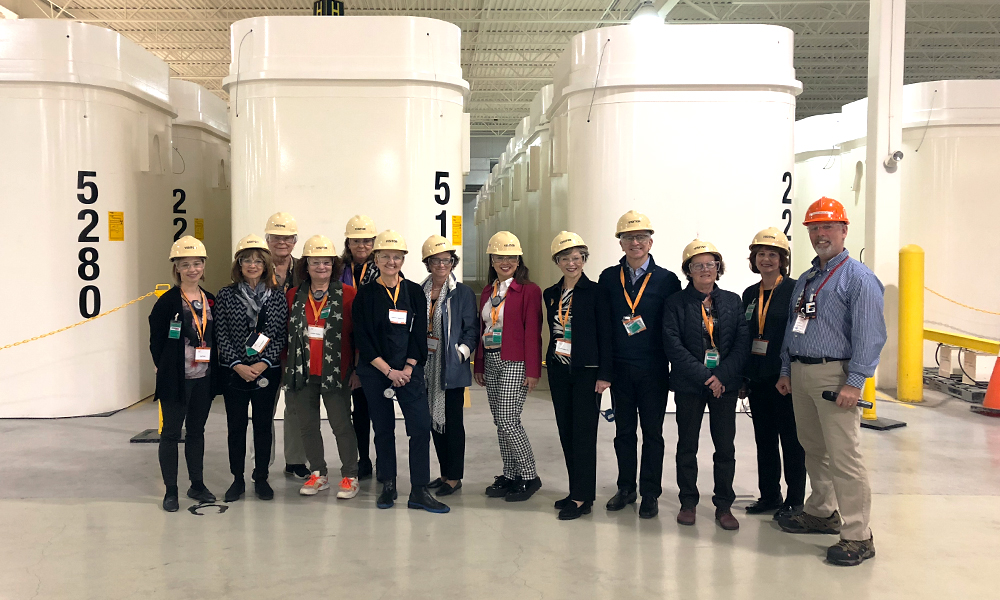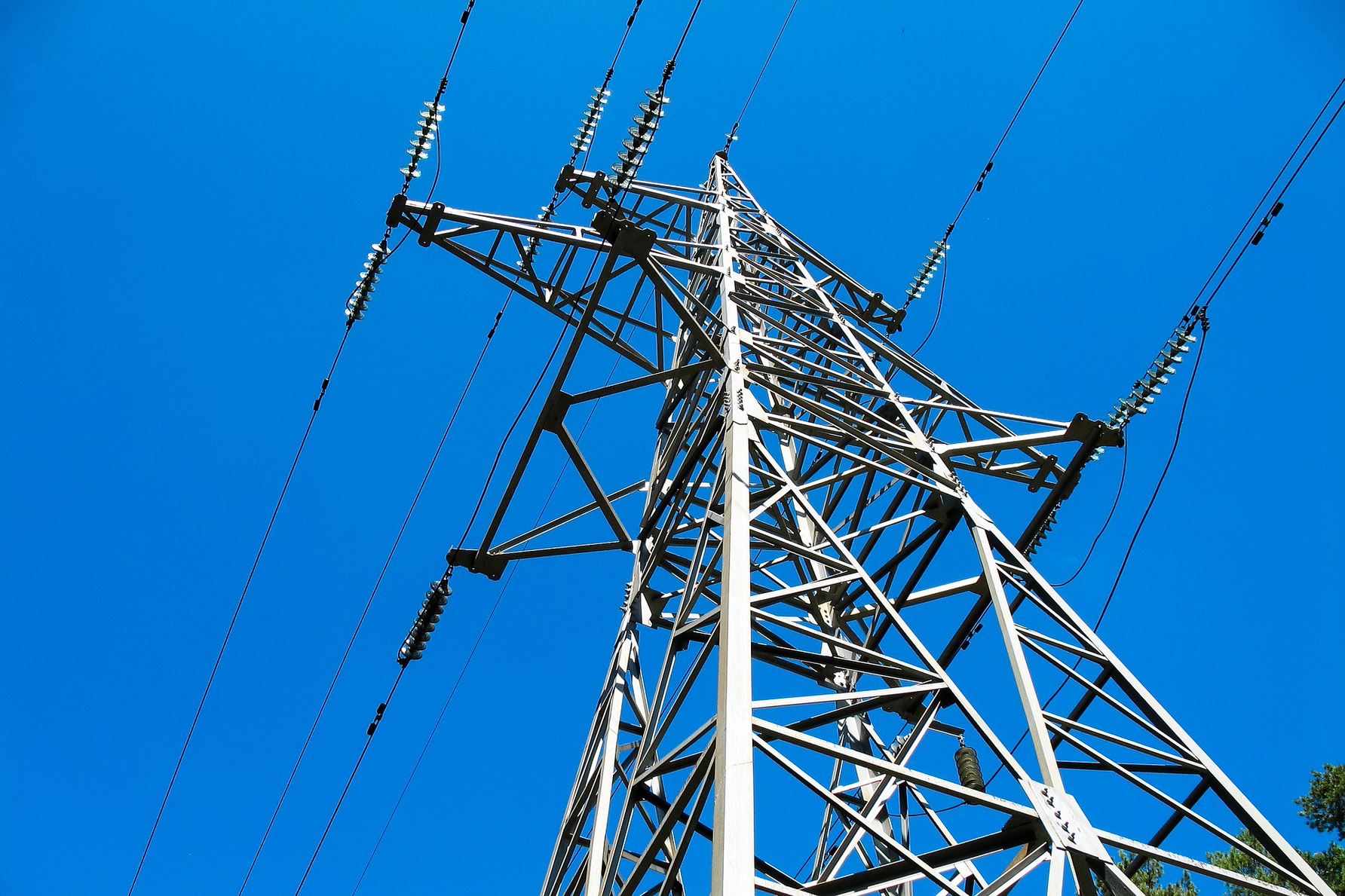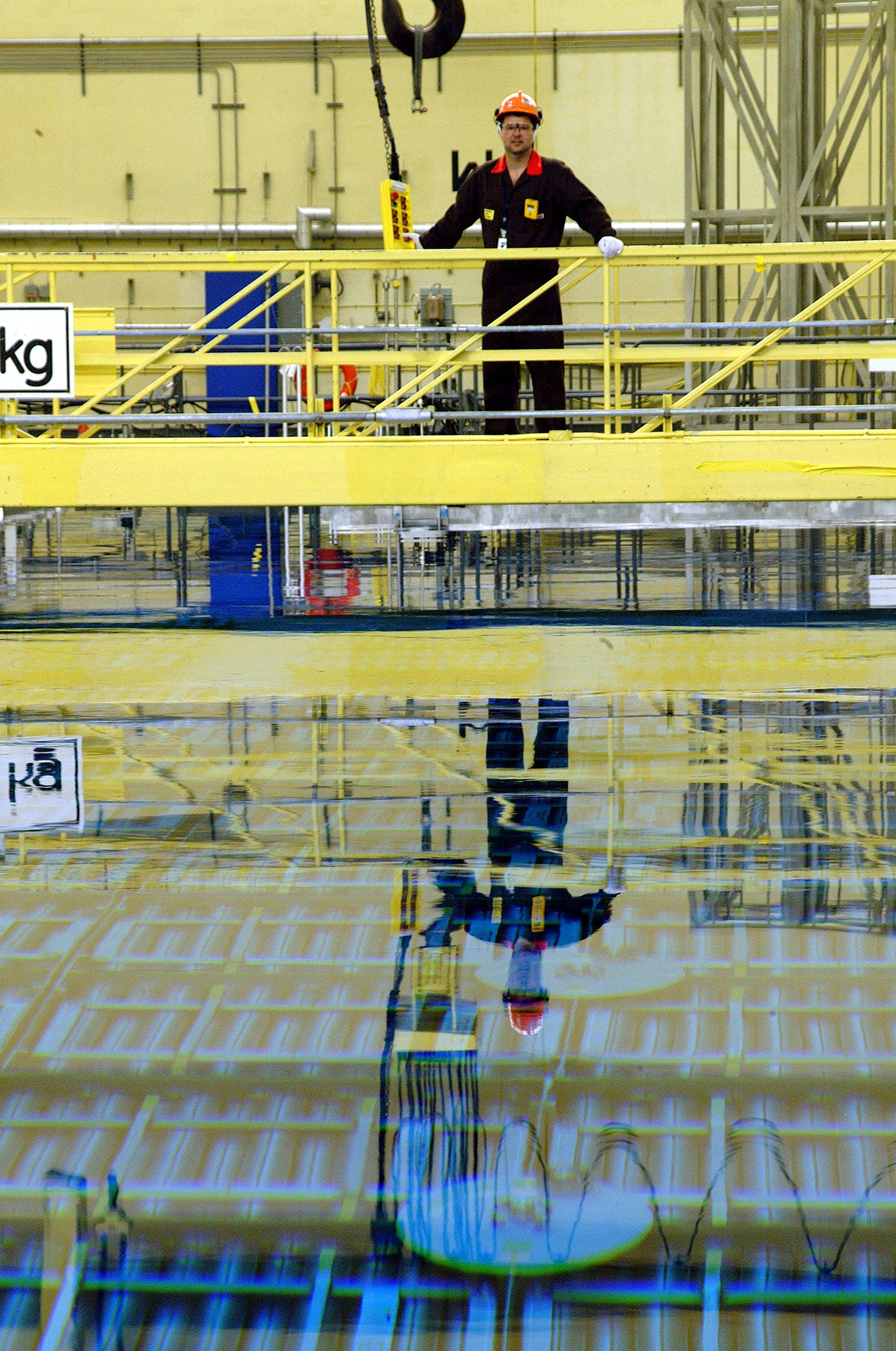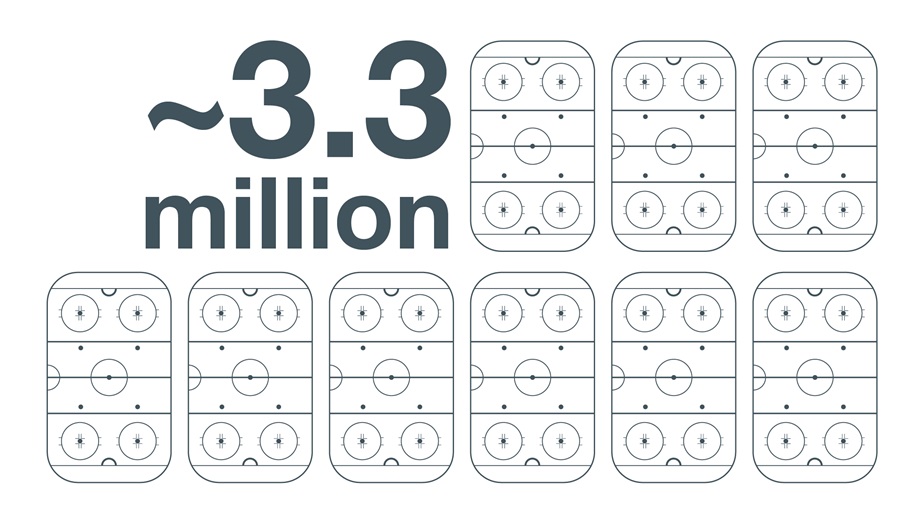Canada's used nuclear fuel
Safety will always be our top priority as we implement Canada’s plan to manage used nuclear fuel for generations to come.
Canada has been using nuclear energy as a reliable, low-carbon power source for our homes and businesses for more than half a century. Now, as worldwide energy demand grows and the need to address climate change intensifies, nuclear power has become an increasingly important part of the conversation, with an active research sector dedicated to emerging technologies.
Used nuclear fuel is a byproduct of nuclear power and it must be safely managed long-term.
/feedback/transportation-3may20221/We-want-your-feedback--EN/usedfuelbundle/squareusedfuelbundle2023.ashx?h=809&iar=0&w=798&rev=a1b0496d582f4b65b4280ded0b4e2fa3&hash=4C95884D3CD68665075D2859FA640DFC)

About Canada's used nuclear fuel
Canada’s used nuclear fuel is currently safely stored at existing reactor sites in Ontario, Quebec and New Brunswick, as well as at a laboratory in Manitoba. Today’s method is safe, but temporary, because it requires ongoing maintenance and management.
This is why Canada has a plan for the safe, long-term management of used nuclear fuel.
#DidYouKnow: What is used nuclear fuel?
Each bundle weighs about 53 pounds (24 kilograms) and is roughly the size and shape of a fireplace log. When removed from a nuclear reactor, the bundle looks the same as when it went in, but it is highly radioactive and will remain that way for a long time.
That’s why Canada’s plan involves containing and isolating used nuclear fuel in a deep geological repository for generations to come.
Watch now

Adapting to new nuclear energy projects
Canada’s nuclear industry continues to evolve. Existing nuclear reactors are being refurbished, and there is ongoing discussion about building new reactors, life-extensions and the potential for new small modular reactors or used nuclear fuel reprocessing. These activities would generate additional used nuclear fuel or other radioactive waste with characteristics similar to the used nuclear fuel from Canada’s current nuclear reactors. The site for Canada’s used nuclear fuel repository has capacity for expansion, subject to community willingness to do so and additional technical evaluation. In case we need additional capacity in the future, we are exploring the potential to include future used fuel from new nuclear projects in the same repository that will manage intermediate-level and non-fuel high-level waste. The site selection process for that project is in development.
How is used nuclear fuel stored today?
When used nuclear fuel bundles are removed from a reactor, they are placed in a water-filled pool where their heat and radioactivity decrease. After seven to 10 years, the bundles are placed in dry storage containers, silos or vaults. Dry storage is a proven technology that has been in use around the world since the 1980s.
Dry storage containers are made of reinforced high-density concrete about 510 millimetres (20 inches) thick — about the height of a border collie — and are lined inside and outside with 12.7-millimetre-thick (half-inch) steel plate. The thickness of the concrete provides an effective barrier against radiation.
The dry storage containers have a minimum design life of 50 years. They are actively monitored, and studies indicate that with ongoing maintenance and inspections these containers can be safely used for much longer periods of time. After 50 years, the life of the container could be extended, or the used fuel could be repackaged. These decisions will depend on a number of factors, including the timeline for implementing Canada’s plan for the long-term management of used nuclear fuel.
Although the used fuel's radioactivity decreases with time, chemical toxicity persists. To protect people and the environment, it requires safe, long-term management.
How much used nuclear fuel is there?
As of 2024, Canada’s existing inventory is about 3.3 million used nuclear fuel bundles. If stacked like cordwood, all this used nuclear fuel could fit into about nine NHL hockey rinks from the ice surface to the top of the boards. At the end of the planned operation of Canada’s existing nuclear reactors, the number of used fuel bundles could total about 5.9 million.
We are also monitoring multiple potential new nuclear energy projects closely to help us prepare for decisions that could change the volume and type of waste we are responsible for managing. The quantity of used fuel produced by potential new nuclear projects, including small modular reactors, will depend on the size and type of reactor and number of units deployed. Proposed new nuclear project plans are at various stages of development. As those projects progress, the NWMO will update our inventory projections.
The NWMO publishes annual inventory reports which can be found here.
Related FAQs
View all FAQsHow much energy does one fuel bundle produce?
One CANDU fuel bundle can provide enough electricity to power one home for 100 years, or about 1,100 megawatt-hours (MWh).
A fuel bundle stays in a nuclear reactor for 12 to 20 months, depending on where it is located in the reactor core. Over time, the amount of Uranium-235 (U-235) in the fuel bundle decreases until it is no longer possible to sustain a nuclear reaction that creates enough heat to generate electricity. U-235 is the primary isotope of uranium that is used to generate electricity.
What is the difference between low-level, intermediate-level and high-level waste?
There are three types of radioactive waste produced by nuclear generating stations — low-, intermediate- and high-level waste.
Low-level waste consists of industrial items (such as mops, rags, cloths, paper towels, clothing and floor sweepings) that have become contaminated with low levels of radioactivity during routine cleanup and maintenance activities at nuclear generating stations. Low-level waste contains mostly short-lived radioactivity and can be handled safely with simple precautions.
Intermediate-level waste is more radioactive and consists primarily of used reactor core components, resins and filters used to purify reactor water systems. This waste produces minimal heat but requires a higher level of containment and isolation for longer time periods than is needed for low-level waste.
Most high-level waste is used nuclear fuel. When used fuel bundles are removed from reactors, they are highly radioactive, contain long-lived radioactivity and generate significant heat. There is also a very small amount of non-fuel high-level waste that comes from other activities, such as medical isotope production. High-level waste requires careful management over the very long term.
Under the federal Radioactive Waste Policy Framework and Canada’s Integrated Strategy for Radioactive Waste, waste owners such as Ontario Power Generation, New Brunswick Power, Hydro-Québec and Canadian Nuclear Laboratories are accountable for the long-term disposal of the low-level waste they create.
The NWMO is responsible for implementing a deep geological repository for used nuclear fuel. In a separate and distinct project, the NWMO is also responsible for disposing of intermediate-level and non-fuel high-level waste in a deep geological repository. This project is still in the very early stages of planning.
Waste owners are also responsible for the interim storage and management of the radioactive waste they create.
Can used fuel burn, explode or melt down?
No. Under Canadian and international regulations, used fuel is not classified as flammable, explosive or fissile material. Used CANDU nuclear fuel is not a liquid or a gas — it is a stable solid. It generates some heat from radioactive decay; however, before being transported to the deep geological repository it will have cooled for decades in interim storage where the fuel was used.
Could you shoot the used nuclear fuel into space?
No. During a three-year dialogue with experts and the public on long-term management methods, disposal in space was one of the options of limited interest that we screened out.
Space disposal was dismissed as an option because it is an unproven concept that is not being implemented anywhere in the world, nor is it part of any national research and development plan. Concerns about the risk of an accident and the potential risk to human health and the environment have been reinforced by the U.S. Space Shuttle Challenger and Columbia accidents.
What happens if used nuclear fuel is exposed to water?
The entire purpose of Canada's plan — the reason we are investing time, effort and money to implement it — is to protect people and the environment, including water.
Used nuclear fuel is a stable solid material. Fuel pellets are made from uranium dioxide powder, baked in a furnace to produce a hard, high-density ceramic. Like all ceramics, this material does not readily dissolve in water.
Even so, in the proposed repository, used nuclear fuel will be isolated far away from water using a series of engineered and natural barriers called the multiple-barrier system. The system is designed to keep the used nuclear fuel in and water out so the two do not come into contact with each other.


